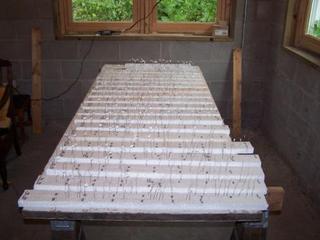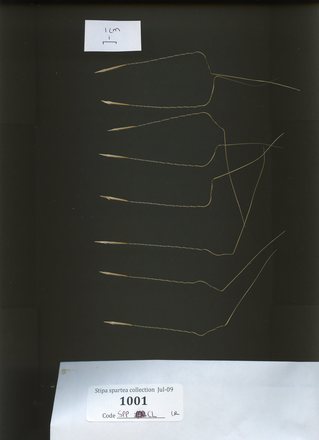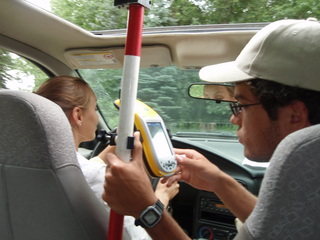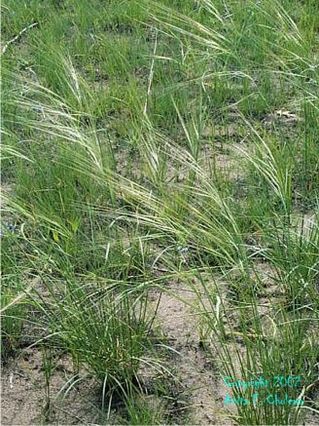I am slowly moving up from the basement to rejoin the world at ground level. Thanks to Caroline for the labels – three sets of slides of co-flowering plants of E. ang. are complete. The pictures are waiting to appear online. Meanwhile, succession of the Hjelm house basement table (door) occurs. As a flowering plant replaces another on the prairie, Stipa spartea seeds have replaced the slides.
Can you see a difference between the pictures?
Wouldn’t you like to peg some Stipa and populate the board?
I think Someone (codename: drone or riddler) may offer a 6-pack to the person who fills the last seed in each hole of each styrofoam “board”. It would be more fun than chasing a chipmunk out of the Hjelm house.


|
||||
|
I attached a map of locations in the CG where we will plant Stipa seeds. Black dots are Echinacea locations, red circles are potential Stipa locations, and blue dots are locations we will plant this year. We will plant each Stipa seed relative to an Echinacea location, maybe 10 cm South or 20 cm North. Any thoughts? Below is one of the scans of Stipa seeds collected from Douglas County. This particular set of seeds was collected from a plant at Staffenson Prairie Preserve. The seeds themselves are pointed towards the left side of the image, and extending from them are the long awns that give Stipa it’s common name (porcupine grass). At this stage, they look less like quills, though, because they have dried and started to coil (click on the picture to see it full resolution and you can actually observe the coils and lots of other neat features of the seed, like hair and a dagger tip!). Out in nature, the coiling action would allow the seeds to attach to a disperser or to drill themselves into the ground in preparation for overwintering and germinating the next spring. We’ll be scanning all of the seeds we collected (an estimated 3,000+ seeds from 431 plants), making digital measurements of seed length and width, and planting around 2,500 of them interspersed with Echinacea in the common garden. We are going to plant Stipa spartea seeds into the common garden. Here is a So, for those of you who were wondering what Team Echinacea will be doing tomorrow, here is the field protocol for the transect searches that we will be using. Any questions, please let us know! Also, we were searching for Stipa today (a prairie grass that Dr. Ridley is planning to add to the common garden), and this is the setup we used to mark the sites with the GPS: The antenna allowed us to get about a 9 cm margin of error when using the Trimble. And yes, that is yours truly manning the antenna, ensuring that the carrier lock is not lost. We were all ready to tell the next person who asked us what it was that we were searching for nuclear waste. For some time, the powers that be on the Echinacea project have thought, “Wouldn’t it be nice to compare all we’ve learned from coneflower with another important native component of the prairie?” Well, this summer, study of habitat fragmentation and its ecological and evolutionary impacts broadens to include an additional species. And the winner is … Stipa spartea aka porcupine grass! The time is right now to collect the seed, which will be sown into the common garden later this summer. Here’s a link to a page from the Bell Museum of Natural History about Stipa spartea. Below, you will find the sampling protocol that Greg and I used to collect seeds from Staffenson Prairie this afternoon. Stuart may have thoughts to add and the strategy might change a bit as we run into the reality of different Stipa remnant populations. In addition to remnants, we will also be collecting seeds from roadside transects. Expect that challenge to be met later next week. |
||||
|
© 2024 The Echinacea Project - All Rights Reserved - Log in Powered by WordPress & Atahualpa |
||||




